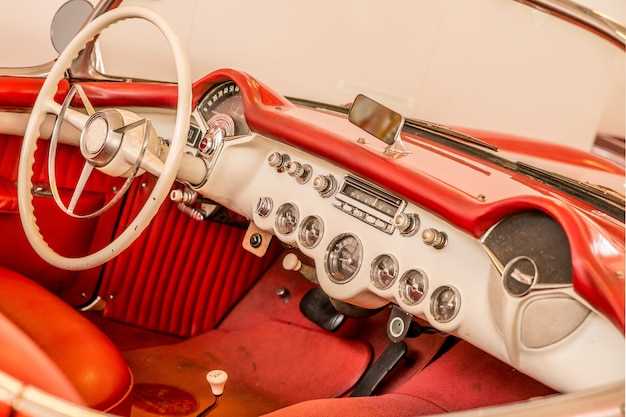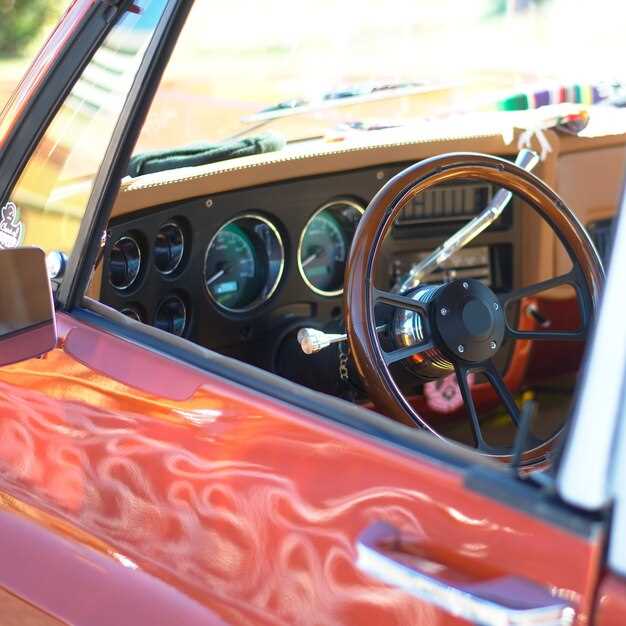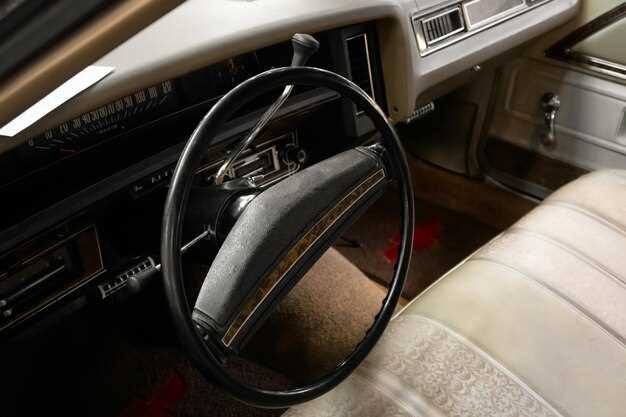How to Restore Classic Car Interiors

Restoring a classic car is not just about bringing its exterior back to life; the interior plays a crucial role in the overall aesthetics and functionality of the vehicle. A meticulously restored interior not only enhances comfort but also contributes to the car’s value and historical accuracy. Successful restoration requires attention to detail, technical knowledge, and a genuine appreciation for the era the car represents.
When embarking on the journey of interior restoration, it’s essential to understand the specific materials and techniques used in the car’s original design. Classic cars often featured unique upholstery, trim, and features that may not be readily available in the modern market. Researching the original specifications can guide your restoration process, ensuring that the result is both authentic and visually appealing.
Moreover, employing the right tools and methods is vital for a successful restoration project. From specialized cleaning agents to upholstery repair kits, having the appropriate resources at your disposal can make a significant difference in the final outcome. Engaging with forums, clubs, and experts in classic car restoration can provide valuable insights and tips, further enhancing your knowledge and skillset.
Choosing the Right Materials for Classic Car Upholstery

When embarking on the restoration of a classic car, selecting appropriate upholstery materials is crucial for achieving an authentic look and feel. The right materials not only enhance the vehicle’s aesthetic value but also contribute to its overall longevity.
Leather is often the material of choice for high-end restorations. Its durability and luxurious appearance make it an excellent option for classic car interiors. Opt for full-grain leather, as it ages well and develops a beautiful patina over time, adding character to your restoration.
Vinyl is another popular choice, especially for budget-conscious restorations. Modern vinyl materials can closely mimic the appearance of leather while providing resistance to wear and staining. Look for high-quality vinyl that is UV-resistant to prevent fading over time.
Fabric upholstery, such as wool or blends, is suitable for certain classic models, especially those from the mid-20th century. Fabrics can provide a vintage aesthetic that complements the car’s design. Ensure that the chosen fabric is durable and easy to clean, as classic cars often require regular maintenance.
When selecting materials, consider the specific era of your classic car. Authenticity is key in restoration; therefore, researching original upholstery options used during the vehicle’s production can guide your choices. Additionally, visiting specialty suppliers that focus on classic cars can offer insights and access to materials that are closest to the original.
Finally, pay attention to the color and pattern of the materials. Staying true to the car’s original design will enhance its value and appeal. Custom options are available, but maintain a focus on authenticity to preserve the classic feel of your restoration project.
Step-by-Step Guide to Reupholstering Seats and Panels

Reupholstering seats and panels is an essential part of restoring the interior of a classic car. This process helps preserve the vehicle’s value and enhances its overall aesthetics. Follow this step-by-step guide to achieve a professional-looking finish.
Step 1: Gather Your Materials
Before you start, collect all necessary materials. You will need upholstery fabric, foam padding, adhesive, a staple gun, scissors, a seam ripper, and a sewing machine. Choosing the right fabric that complements the classic style of your car is crucial for an authentic restoration look.
Step 2: Remove the Seats and Panels
Carefully remove the seats and interior panels from your classic car. Use a seam ripper or screwdriver to detach any fasteners. Take your time to avoid damaging the components, as they might be integral to the restoration process.
Step 3: Assess and Repair
Inspect the seats and panels for damage. Repair any structural issues with new foam or wood, ensuring that the base is stable before proceeding. This step is vital for achieving a lasting restoration that can withstand everyday use.
Step 4: Remove Old Upholstery
Strip away the old upholstery carefully using a seam ripper. Take note of how the original fabric was attached and the layout. This will serve as a guide for the new material and help maintain a classic appearance.
Step 5: Cut New Fabric
Using the old upholstery pieces as templates, cut the new fabric accordingly. Make sure to leave extra material for seams and tucks. Consider using a thicker fabric for seat bottoms to ensure durability during restoration.
Step 6: Attach Foam Padding
Apply a layer of foam padding to the seats and panels for comfort. Ensure it is securely glued in place before covering it with fabric. The right padding will enhance the overall feel of the classic car’s interior.
Step 7: Sew the New Upholstery
Begin sewing the pieces of fabric together, following the layout observed in the old upholstery. Use a sewing machine for stronger seams and techniques like topstitching to replicate original designs. Pay close attention to detail, as this will make a significant difference in the final look.
Step 8: Attach the New Upholstery
Once the new upholstery is ready, stretch it over the foam and carefully attach it to the seat or panel using a staple gun. Ensure a tight fit to avoid wrinkles and ensure a professional appearance. Overlap fabric at corners for a tidy finish.
Step 9: Reinstall Seats and Panels
After the upholstery has been securely attached, re-install the seats and panels into the classic car. Make sure everything fits correctly and is aligned properly. This is the final stage of your restoration journey.
Step 10: Final Inspection
Conduct a thorough inspection of your work. Check for any uneven seams, loose fabric, or unmet expectations. Making minor adjustments at this stage can lead to a polished and stunning interior for your classic car.
By following these steps with care and attention to detail, you can successfully reupholster the seats and panels, ensuring your classic car’s interior stands out beautifully.
Techniques for Maintaining Original Aesthetic While Restoring
When embarking on a restoration project for a classic car, one of the primary goals is to preserve the original aesthetic of the interior. To achieve this, it’s essential to utilize various techniques tailored to maintain the authenticity of the vehicle while enhancing its overall condition.
Start by sourcing the correct materials that match the original upholstery. Look for fabric, leather, or vinyl that replicates the texture and color of the initial interior. Original samples can be a tremendous help in ensuring accurate matches. Consider consulting with restoration experts or classic car clubs that could provide insights into authentic materials.
When it comes to refurbishing or replacing components like seats, dashboards, and trim, prioritize restoration over replacement when possible. Carefully restoring existing parts not only retains the classic feel but also avoids the potential mismatch of new components. Utilize methods such as dyeing or reupholstering to breathe new life into worn-out pieces without compromising their original look.
Maintain the original layout and functionality of the interior as well. This entails keeping factory-installed features intact and avoiding modern upgrades that can alter the car’s character. For example, if the original stereo system is outdated, consider restoring it rather than replacing it with a new unit. This keeps the classic vibe alive while improving sound quality where feasible.
Document the restoration process meticulously, including before-and-after photographs that showcase authentic features. This practice not only serves as a valuable reference but also enhances the vehicle’s story, which is an essential aspect of classic car ownership.
Lastly, engage with a community of classic car enthusiasts who share similar interests. Their knowledge and experience can guide you in making choices that uphold the integrity of the original aesthetic while you work on restoring your classic car’s interior.



